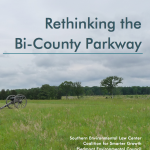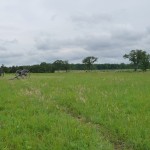Latest Happenings

Bi-County Parkway Means Traffic Solution or Fresh Mess
A new route through some of Prince William County’s rural north is pitched as pro-business and part of the area’s transportation solution, but critics have lined up to push back on a new run of pavement through a part of the region happy to be away from gridlock. The Commonwealth

Bi-County Parkway debate fueled by research from both sides
One of our regular readers brought to our attention an issue that we haven’t been covering: Northern Virginia’s proposed Bi-County Parkway. The parkway would connect Prince William and Loudoun counties, but it has sparked an impassioned debate about our region’s growth trends. On the one side, the Coalition for Smarter
Bi-County Parkway in Virginia will add congestion, groups argue
A coalition of groups critical of the proposed Bi-County Parkway has released a report it says bolsters its case that the roadway could worsen traffic congestion in Loudoun and Prince William counties. Norman L. Marshall, president of Smart Mobility, which conducted the analysis using data from the Virginia Department of Transportation, said

Rethinking the Bi-County Parkway
Full report with executive summary and appendicesPress releaseCSG memo summarizing components of its comprehensive alternativeVirginia Department of Transportation memo on CSG's substitute visionVirginia Department of Transportation revised traffic analysis memo

REPORT: Rethinking the Bi-County Parkway
The Virginia Department of Transportation's ("VDOT") own traffic modeling data reveal that the proposed Bi-County Parkway (“BCP") would worsen, not relieve, traffic congestion. The same model shows that the comprehensive alternative offered by our coalition (termed the “Substitute Vision” by VDOT) will better address congestion in the study area, and better serve the dominant need for east-west traffic capacity—now and in the future.
